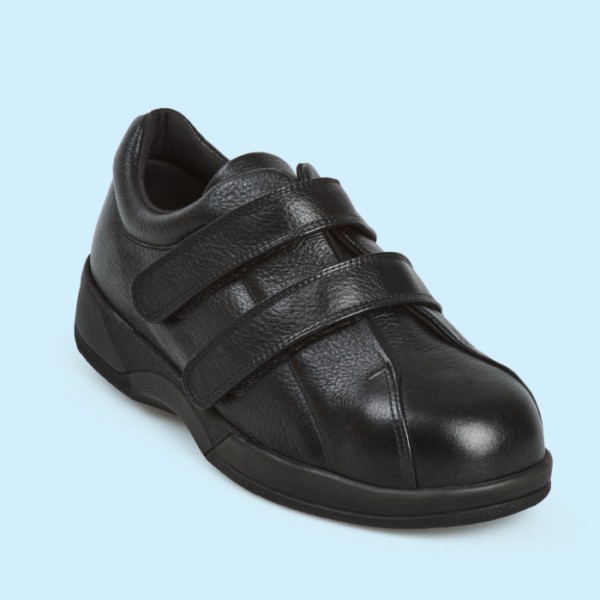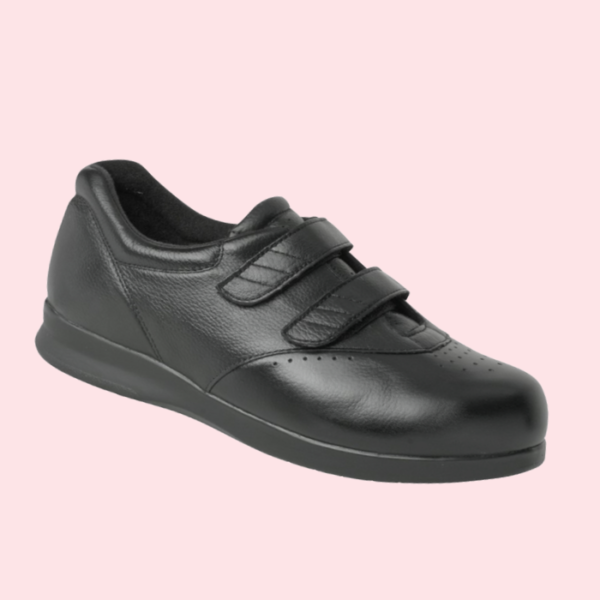The Best Shoes for Bone Spurs Recommended by Podiatrists
What are the best shoes for bone spurs, heel pain, or plantar fasciitis? This is the question that people look for when they face bone spurs or other foot problems. As the anatomy of every foot is different, we promote looking for specialised shoes that fit the requirement of individuals. MediComf takes pride in being a leader in the shoe industry that offers a solution to people with foot problems. We are offering comfortable shoes for people with bunions or any other foot problem.
 Best Shoes for Bone Spurs
Best Shoes for Bone Spurs
People with problems in their heels or have bone spurs must look for comfortable shoes to heal from discomfort. Best Shoes for bone spurs with a solid heel counter could do the job for many. The heel counter is the rear part of the shoe that supports the heel bone. The main idea of have extra padding or cushioning to deal with pronation or supination.
Whether you have pronation or are a victim of supination, you could develop plantar fasciitis if you ignore the issue. It should be a key benchmark for you to have a shoe that has a sturdy heel counter. If the heel counter collapses, the shoe is not suitable and will most likely not correctly support your foot and ankle.
Shoes For Bone Spurs are Suppleness
The second thing to look for is the suppleness of shoes for bone spurs. Hold the shoe by the heel and toe with both hands. Try to bend the shoe sole in the centre. If the sole provides little resistance and collapses in the middle, you should avoid buying such a shoe.
Shoes For Bone Spurs to Prevent Falls
The appropriate soles of shoes for bone spurs should bend gradually and provide some resistance to prevent falls. This is required in order for the shoes to survive the thousands of steps you will take while wearing them. The next item to look for is the raised heel with a rocker sole.
The heel of the shoe should be around 1 inch high; this will assist relieve pressure on your hurting heels. The easiest test to test the rocker sole is placing the shoe on a level surface and pressing down on the toe. The shoe should slide forward as it rocks.
As a general rule, the more the shoe rocks, the better it is for healing plantar fasciitis. Never buy a shoe with a “neutral” or flat heel since this sort of shoe will unload your foot’s weight bearing onto your heels, producing extra pressure and worsening the issue.
MediComf is one of the leading manufacturers and suppliers of running shoes for underpronation. MediComf provides the backing and support you need to reduce the pain of underpronation and plantar fasciitis. The MediComf supports your feet and sits at your feet all day long.
What is Underpronation?
You lift or bend your ankle slightly to hold the impact or move forward whenever your foot sits down or pushes to take action. With healthy walking, the foot slowly turns inward.
Underpronation or supination occurs when the ankle does not roll inwards too far (less than 15per cent) when sitting or pushing, causing the foot to climb outwards and compress the ankle and toes. If left unmanaged, exposure can lead to severe pain, injury, and damage to the foot’s tissues.
 Who Is at Risk for Underpronation?
Who Is at Risk for Underpronation?
The excellent news is pronunciation/calling is rare. Nevertheless, some people are more at risk of being over-described than others. If any of the following characteristics apply to you, they may be:
- People with High Arches
- People with strong Achilles tendon (e.g., people who participate in high-impact sports and wear the Achilles tendon)
- People with a foot or leg are not injured that change direction (e.g., hammers, shin splints, or knee injuries)
- People who wear unsupported shoes
Symptoms of Underpronation
Depending on your work level, overeating symptoms may be subtle; for example, severe aging on the outer edge of your shoes may be a sign of distress. Many overdose symptoms appear during high-impact sports such as running, basketball, or soccer.
The most widely recognised side effects of underpronation are tormented in the foot’s curve. The chunk of the foot as the muscles and tendons (particularly the curve) experience the ill effects of strange development. In some cases, it can cause back and knee pain under pronunciation. Many underpronators make calluses or bunions on the pinky toe side of the foot. There is massive pressure placed on this side of the foot. As a result of abnormal foot movements, stability can be disrupted, leading to further falls, bent ankles, or sprains.
Risks of Underpronation
Lower protection can increase your risk of many different pain conditions:
Plantar Fasciitis
One of the significant dangers of underpronation is impact point torment and plantar fasciitis, which runs under the foot and appends to the impact point bone and attempts to disperse the effect and power well while strolling or running. However, pronunciation puts excessive pressure on the fibrous tissue, causing the band to become overstretched, worn out, flat, and cause tears in the muscle.
Heel Spurs
Heel spurs are another risk factor for underpronation, a development in which excessive use or injury causes the plantar fascia to pull at the heel bone. In response to this trauma, it may initiate the formation of small calcium deposits, which irritate delicate tissue in the foot’s heel during movement.
Rolled ankles from a fall because underpronation or supination creates stable mobility. People with this impact are at greater risk of falling due to unstableness. There is a chance for other injuries when the foot rolls too far and paralyses the body during movement.
Hammertoes and Bunions
Pushing and descending force fall equally on the outer toes (pink toe and outer edge of the foot), leading to bonuses and hammertoes (when the toes bend down after repeated trauma and pressure on the toe box.
Best Shoes for Bone Spurs
Wearing the shoes for bone spurs to correct your underpronation is one of the best ways to keep your footing and foot in the right place. Choose supportive walking shoes for underpronation with thick soles, support your Arch, and fit snugly (but do not squeeze or squeeze your toes as you walk). Make sure you consider the depth and width of the shoes when choosing shoes – not just the length of your foot! Each factor makes a difference in how shoes for underpronation women support your feet, especially during high-impact activities such as running and sports.
Things to Consider When Choosing Best Shoes for Bone Spurs
Having the best shoes for bone spurs is very important to give you the safety and comfort of your running experience. But buying the latest running shoes and expensive ones is not enough to have a perfect pair. The shoes should fit perfectly with the footing, type and size of your foot are the factors your shoe should have.
A simple method for deciding your foot type is utilising a Wet Test to determine your curve tallness. This test is done by wetting your feet and standing normally on paper. This will mark your footprint on paper. And this seal can give you an idea of your foot type.
Contact Us
MediComf’s best shoes for bone spurs are made up of leather material and unique silicone material. If you are suffering from underpronation, you can use the shoe for underpronation to walk properly. If you want more information and detail, please do not forget to get in touch with us.













